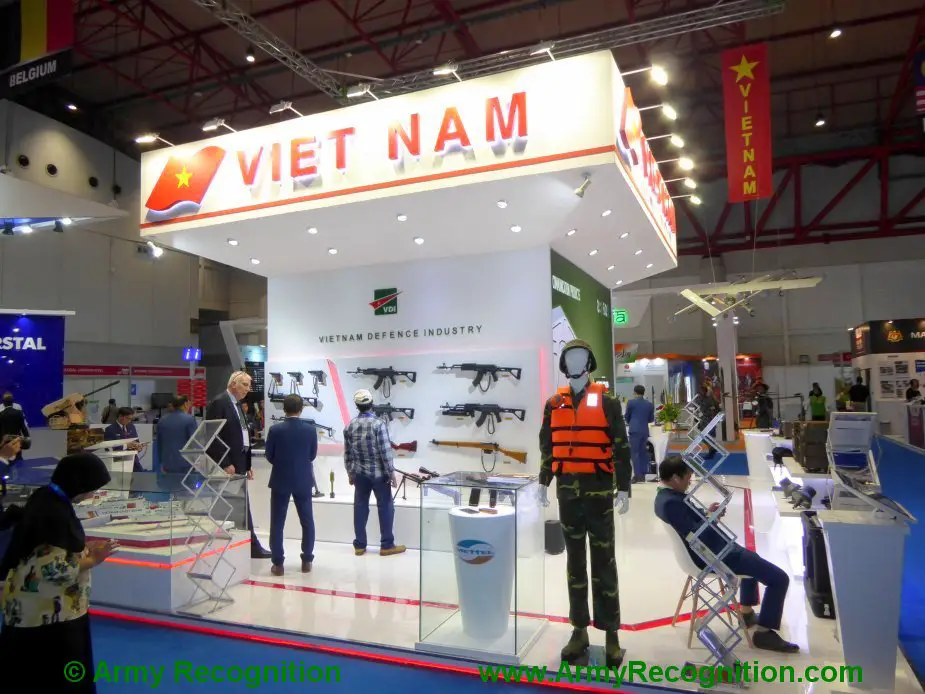Vietnamese annual defense budget to reach USD 7.9Bn by 2024
According to a report published by BusinessWire, China's increased naval presence and territorial claims in the disputed waters of South China Sea are the major factors compelling the Vietnamese government to increase its military capabilities.

At IndoDefense 2018 in Jakarta, the Vietnamese defense industry exhibited for the first time at such a scale (Picture source: Army Recognition)
The Vietnamese Government allocated US$5.1 billion towards military expenditure in 2019, of which 32.5% is earmarked for the procurement of defense equipment. The country's military modernization efforts are focused on preventing China from taking hold of disputed territory in the South China Sea. Over the forecast period, the country is expected to procure fighter and multi-role aircraft, armored vehicles, naval vessels, patrol ships, maritime patrol aircraft, and surveillance equipment. The country's defense expenditure is projected to increase from US$5.5 billion in 2020 to US$7.9 billion by 2024.
As assessed by BusinessWire, between 2015 and 2019, Vietnam cumulatively spent US$7.2 billion on defense equipment, while US$15 billion was assigned for revenue expenditure. Over the forecast period, Vietnam's capital expenditure is expected to grow at a CAGR of 9.43% and revenue expenditure is expected to register a growth of 9.44%. Vietnam's slow population growth is projected to increase per capita defense expenditure from US$53.7 in 2019 to US$79.3 by 2024.
Vietnamese homeland security expenditure, on a cumulative basis, is expected to be US$20.9 billion over the forecast period compared to US$12.7 billion spent between 2015 and 2019. Efforts to protect its maritime boundaries, coupled with the need to counter human trafficking and the illicit drug trade are anticipated to drive homeland security expenditure during the forecast period.
The lack of technology and low domestic defense capability has forced the country to import weapon systems from foreign OEMs in order to fulfill its military requirements. Over 2014 to 2018, Russia emerged as the largest supplier of military hardware to Vietnam with a share of over 77.9% of Vietnam's imports, followed by Israel, Belarus, South Korea and Ukraine accounting for 9%, 4.1%, 2.8% and 2% respectively. Vietnam prefers government-to-government deals when procuring defense equipment; therefore, improving government-to-government relationships is expected to open up business opportunities over the forecast period.


























